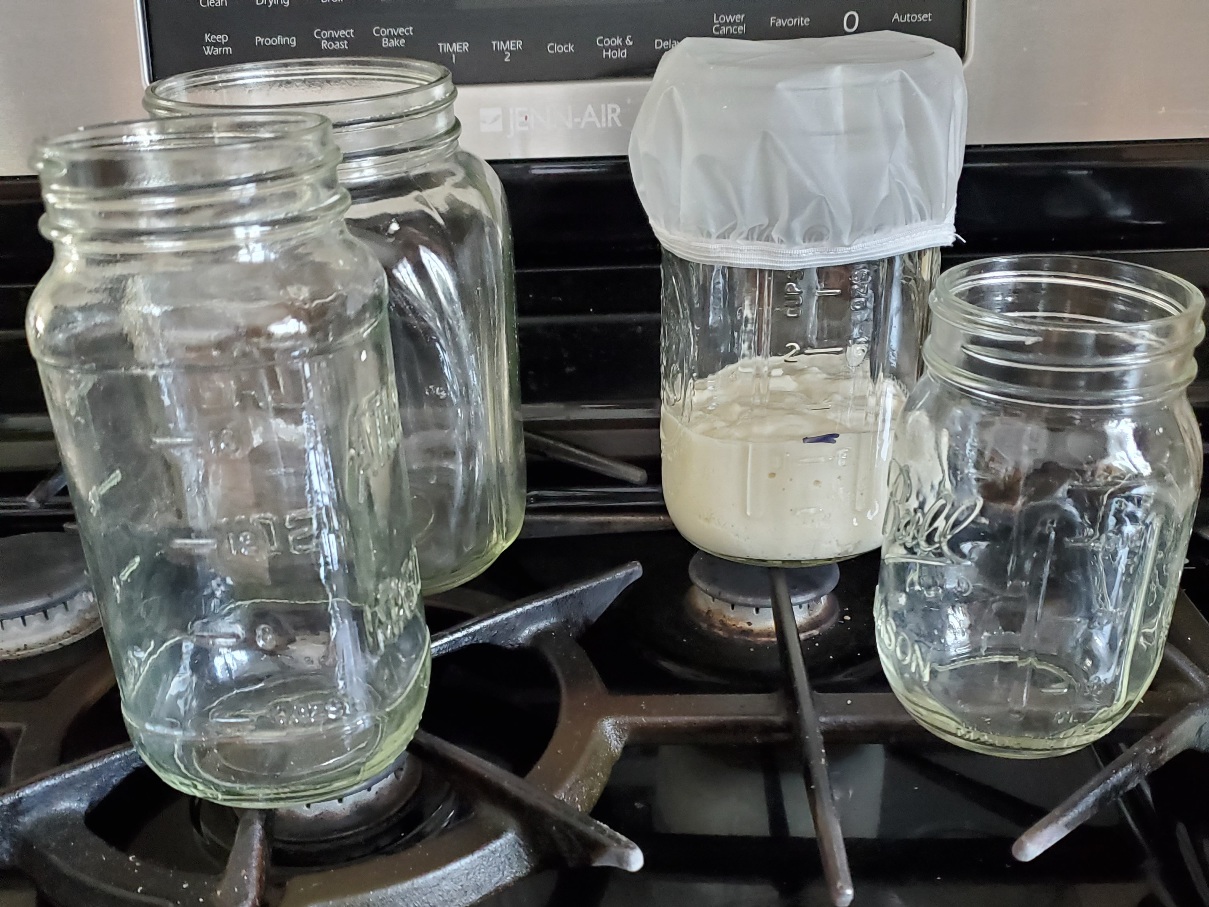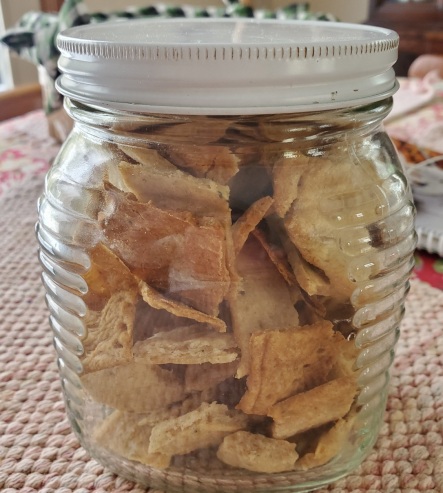“…no one is born a great cook. One learns by doing.”– Julia Child
In March 2020, I discovered sourdough. As they say, good can come from the challenges we face. And, indeed, that is what happened to me.
While working at home during the Covid 19 pandemic, I could not locate dry yeast in the grocery stores, so I decided to see if I could grow my own. I began by reading everything I could about making wild yeast and discovered sourdough starters. The process of making my own yeast seemed overwhelming, but through experimentation, I applied what I read. My first starter began with starchy potatoes and flour. My second experiment was a mixture of flour and water. Since I was unsure what the starter should look like or when or how to use it, it took me a few weeks to understand how it all worked. Quite a few of my early baking attempts using my sourdough starter created baked goods that tasted and looked terrible.


Now I have improved greatly! Before baking, I begin to prepare the levain.* First, I take my oldest sourdough in the jar from the refrigerator and stir the hooch* back into the dough beneath it. The starter becomes very watery. Then I add and mix almost equal amounts of room temperature water (yes, I use Vermont tap water) and one and a half times the all-purpose white, wheat, or a combination of flour. More flour is added until I am stirring a thickish batter-like dough. I select the correct size glass jar for the amount of starter, and especially during the winter months, I warm up the jar with hot water and pour it out before adding the sourdough. A black sharpie marks the height of the sourdough. Over the next few hours, the sourdough gases intersperse the dough doubling its height. The texture is beautiful and is ready to use in your baking!

Since those early days, I can’t believe how successful my sourdough starter has been. Three years later, I am still using that same sourdough starter by adding water and more flour. Bread, baked desserts, pizza dough, and pancakes have never tasted so delicious as they are with my homemade levain or discard sourdough starter. Of everything I have made, the most challenging has been crusty french baguettes. It has taken quite a long time to learn to make these look authentic. I am still working to improve them.



Finally, I should mention that experimenting with sourdough baking is both messy and fun. Flour and dried sourdough can often be found in my hair, between my fingers, stuck to my clothes, and hardened on kitchen cabinet doorknobs. Still, as I scramble around the kitchen measuring by grams, scooping, leveling, folding, and stretching the dough, I am joyously doing what I enjoy and sharing yummy food with my family too. — Carole
Below are some successful sourdough recipes referenced in this post. Good luck trying them out.
Sourdough Crackers Recipe — King Arthur
Grinder Rolls (soft) – Baking Sense
Crusty Overnight Sourdough Baguettes – Somebody Feed Seb
Terms Used:
*Levain is the portion of a sourdough starter prepared for a specific recipe.
*Hooch is the fermented liquid that separates from and collects on the top of your starter. The hooch should be somewhat clear and smell a bit pungent. It should not be moldy or black.

Beautiful! And did you name your sourdough?
LikeLike
Oh, that is such a fun idea. I forgot about naming my sourdough.
Maybe..
“Levain Bubbles”
After my husband, Lev…my biggest fan and cheerleader! Thanks, Dorothy!
LikeLiked by 1 person
Great name! Mine is Ginny Junior because I started it years ago using my friend Ginny’s grapes!
LikeLike